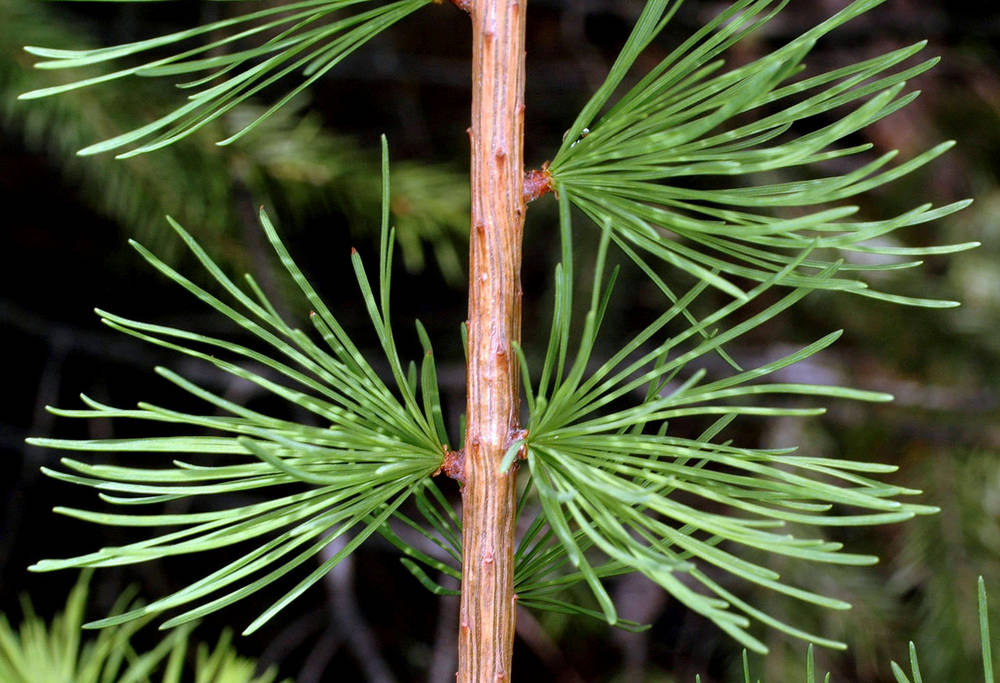Larix occidentalis
(synonym of Larix lyallii)
western larch
2–4.5 cm × 0.5–1 mm; soft; flexible, triangular in cross section;
abaxial surface pale green, keeled;
adaxial surface pale green, with a convex midrib;
apex sharp pointed.
ovate-oblong; less than 1 cm long, yellow, sessile or on short stalks.
3–6 mm long; reddish brown;
wings twice as long as body.
to 2 m in diameter;
bark reddish brown; thin when young; thick and furrowed with age, scaly; flaky;
branches somewhat ascending on upper branches to drooping on lower branches; in forests often without branches for most of height;
twigs stout, orange-brown pubescent when young, becoming glabrous, with prominent leaf pegs.
oblong-ovoid, 2.5–4 cm long; reddish brown; on short curved stalks;
scales ovate;
bracts exserted several millimeters beyond the scales, tipped with awns to 3 mm.
=24.
Larix occidentalis
Mid-elevation forests. 700–2200 m. BW, Casc, ECas, Lava, WV. ID, WA; north to British Columbia, northeast to MT. Native.
The largest of the American Larix species, this species produces one of the most valuable timbers in the western United States. Trees of this species may live over 500 years.
Stephen Meyers
- Local floras:
BC,
OR,
WA
- Local Web sites:
Flora NW,
PNW Herbaria
WildflowerSearch
iNaturalist (observations)
USDA Plants Database
- LBJ Wildflower Center
- SEINet
- Plants of the World Online
- Encyclopedia of Life
- Wikipedia
- Google Image Search



